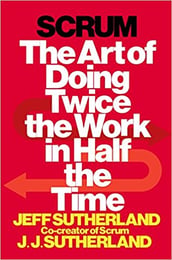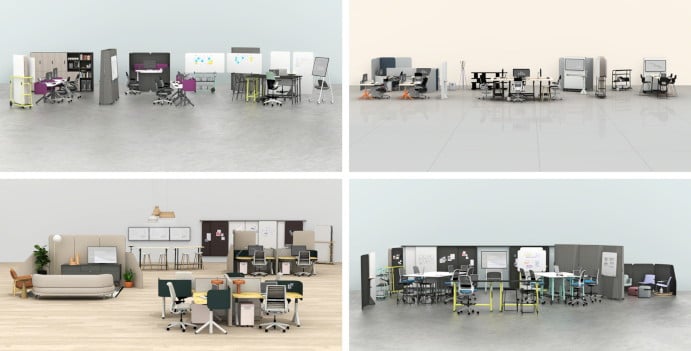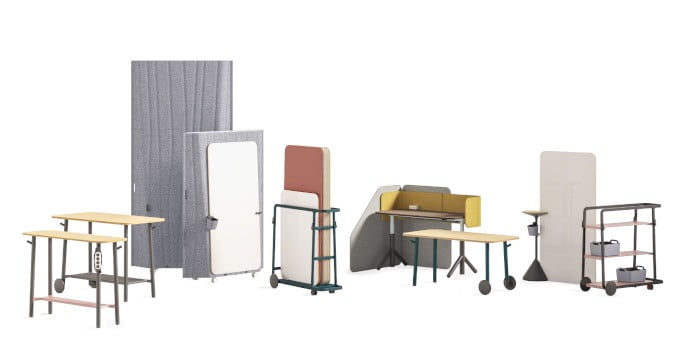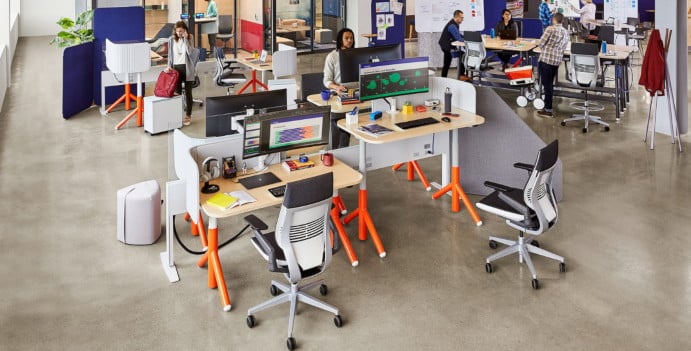Can agile working make you happy?
Can work ever make you happy? It’s a provocative question.
For centuries work has been seen as the grind, a necessary evil, a precursor to the final relief of retirement or death, whichever came the sooner.
Why should I let the toad work
Squat on my life?
Philip Larkin
And for some, Monday morning is still greeted with a mixture of anxiety and dread.
But according to Jeff Sutherland - author of Scrum, the seminal book about Agile working - our jobs could and should be bringing us happiness:
“Work doesn’t have to suck. It can flow; it can be an expression of joy, an alignment toward a higher purpose”
J Sutherland, Scrum, The Art of Doing Twice the Work in Half the Time
So, what’s standing in the way?
Sutherland’s ans wer to this question is an outmoded corporate culture calculated to alienate us from the tasks we perform.
wer to this question is an outmoded corporate culture calculated to alienate us from the tasks we perform.
Tasks that are planned and completed in silos, then handed off to some further link in a chain.
Processes that strangle innovation. Methods of working that actively lead to misunderstanding, error and delays in delivery.
These are the working practices that conspire to make us unhappy, because they hamper our ability to be effective and find fulfilment in the tasks we undertake every day.
So, in 2011 Sutherland and his collaborators proposed Agile as a solution to the misery of our unmet potential.
What is agile working?
Agile is a development practice devised by software engineers working on large military projects in the US, who wanted to find faster and more responsive methods of delivering on their goals.
Agile focuses on closer collaboration within and across teams; rapidly iterating working products to improve customer focus, innovation and speed of delivery.
This method of working has proved so successful that it has subsequently been embraced by many other teams in sectors away from IT.
The promise of agile
In Agile - work is broken down into a series of time-limited Sprints entailing the completion of specified tasks, bookended by group planning and review sessions. Sprints are punctuated by brief, daily stand up’ meetings to report on progress and remove obstacles standing in the way of completion.
Over time Agile teams become focused on sharing knowledge, understanding dependencies and hitting targets. Ultimately, they become self-directing entities; adaptive, responsive and committed to problem-solving as they drive to deliver.
Happiness is agile
This, then, is the transcendent happiness that Sutherland promises.
Agile is the fulfilment of individual potential, a shift to working with purpose, becoming part of hyper-collaborative teams that continually deliver and exceed expectations.
Agile by design
But it’s no easy task to get there. Businesses can’t magically make their team’s agile and neither can they simply impose it by management decree.
However, for those adopting agile practices, there are workplace design features that will better facilitate the required mindset and make the necessary transitions of the agile working day more seamless and possible.
Managing flow
In the Agile workplace, flow is everything. The ability for individuals in a team to meet together in various configurations - to move from group to individual work and back again - is an absolute requirement.
Steelcase’s new Flex range of furniture has found exciting ways of translating these requirements into the language of design.
A mix of analogue and digital displays make it easy for a team to share developments on projects in a variety of ways - from more formal presentations - to informal gaggles around work in progress.

Acoustic boundaries and marker boards create the ideal space for ideas to flow freely during a creative brainstorm, but not disrupt other parts of the office.

The standing-height slim tables keep all participants actively engaged in conversation and dynamically focused on tasks.
Surrounded by moveable, pinnable screens, the team can easily access all of their information and ideas. When a stage of work is complete, the configuration can be changed to support the next phase of a project.
Managing Proximity
Proximity is important in Agile. One of the 12 principles of Agile is that workers should be co-located. Colleagues must work closely with each other face to face (and day by day) to find the alignment necessary for seamless working. Customers and product owners must also be available and present to contribute to planning and feedback sessions.
But modern practitioners of Agile have begun to realise that the competing demands of flexible working, global distribution and the development of collaborative technology - means that we should now achieve these goals through a combination of virtual and real presence in the workplace. This approach has become known as 'distributed agile'.
‘Distributed agile’ needs careful planning. The sensitive use of video calling, the need for spaces where dispersed teams can come and meet face to face, all have to be accounted for in your planning,
In the physical workplace, experts realise that teams need the ability to work closely together but find private spaces where they can concentrate on complex tasks without distraction. Flexible open spaces can work, but individuals need the ability to acoustically and visually screen themselves off from colleagues when required.

Happiness beyond hierarchies
The agile environment is one where teams and individuals can realise the goals of autonomy, mastery and purpose. It is a decisive break with the past, where teams were directed and managed to achieve results from the 'top down'.
A workplace designed for agile makes it easier to achieve this autonomy. It is focused on openness and transparency while facilitating independent working within self-organising and non-hierarchical teams.
The games company Valve exemplifies this philosophy in action. Individuals propose ideas for new software developments which are then approved by the team at large. Individuals who need to work together on the project simply push their workstations together in order to collaborate. In the Valve offices no furniture is fixed in one position - desks are on wheels to facilitate new and required working configurations.
How to be happy
But is Agile an impossible dream for most workplaces? Should you be daunted by the nature and scale of its transformational challenges?
Agile teams attain happiness through their sense of purpose. In this it espouses the value of Kaizen - the achievement of improvement through incremental steps.
By introducing elements of Agile thinking into your office design and working practice, therefore, you can begin to naturally realise elements of the 'flow' and 'velocity' that characterise this way of working.
As Jeff Sutherland says, the joy teams can derive from Agile, is not a kind of 'wedding day delirium' but a more transcendent experience of satisfaction. and fulfilment
The basic happiness that humans' feel when we're all successfully pulling together, in the same direction of our own free will.




